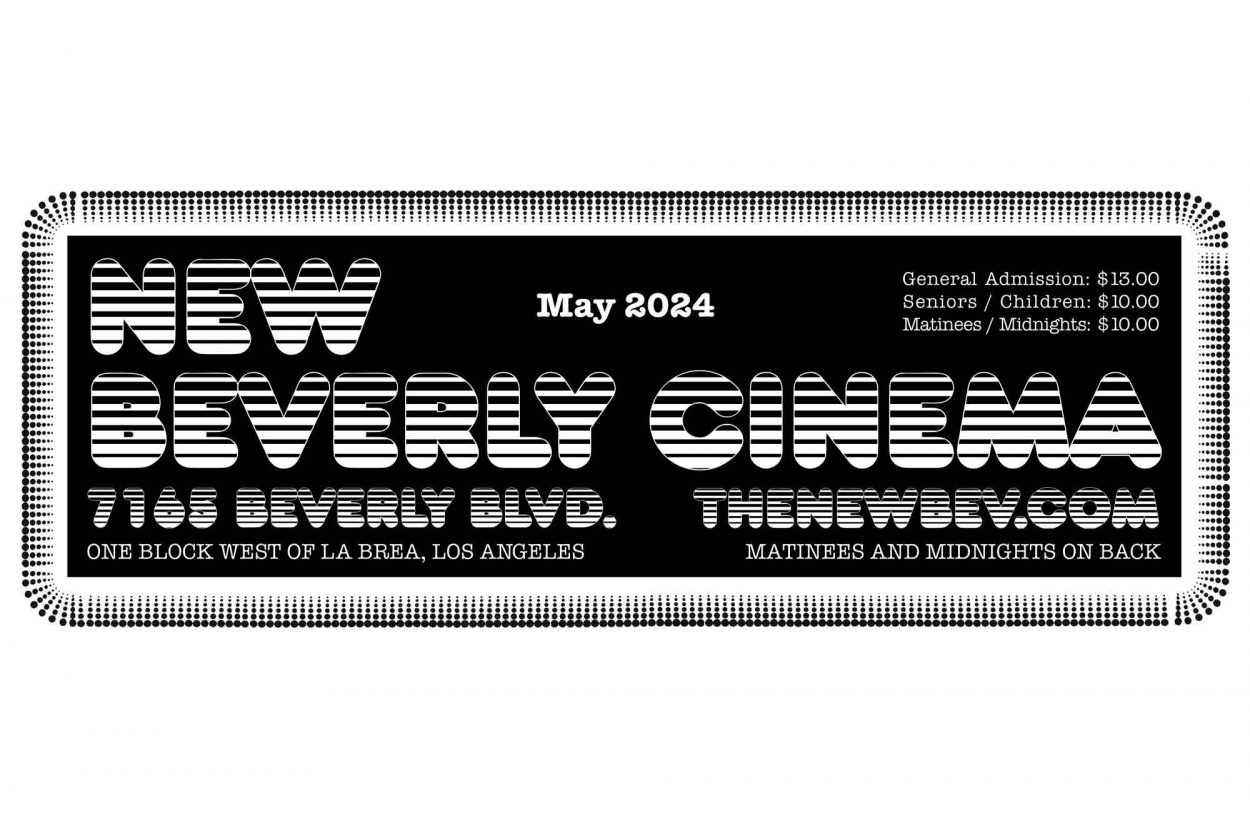The fact that it’s a remake of his own 1934 film is not the only reason that Alfred Hitchcock’s The Man Who Knew Too Much is an unusual work. Made in booming color at Paramount like the sensational Rear Window, The Man Who Knew Too Much was only able to be seen for a brief time before being relegated to a group of five films known as the “Missing Hitchcocks” – Rope (1948), Rear Window (1954), The Trouble With Harry (1955), The Man Who Knew Too Much (1956), and Vertigo (1958). While critical issues exist around TMWKTM and its identity as a remake, this film owes its blood-pressure raising moments and high-suspense pacing to a polished use of music/aural cues in tandem with images. This skill was part of Hitchcock’s directorial repertoire and indisputably influenced by his great respect for early Soviet cinema and Russian film montage theorists.
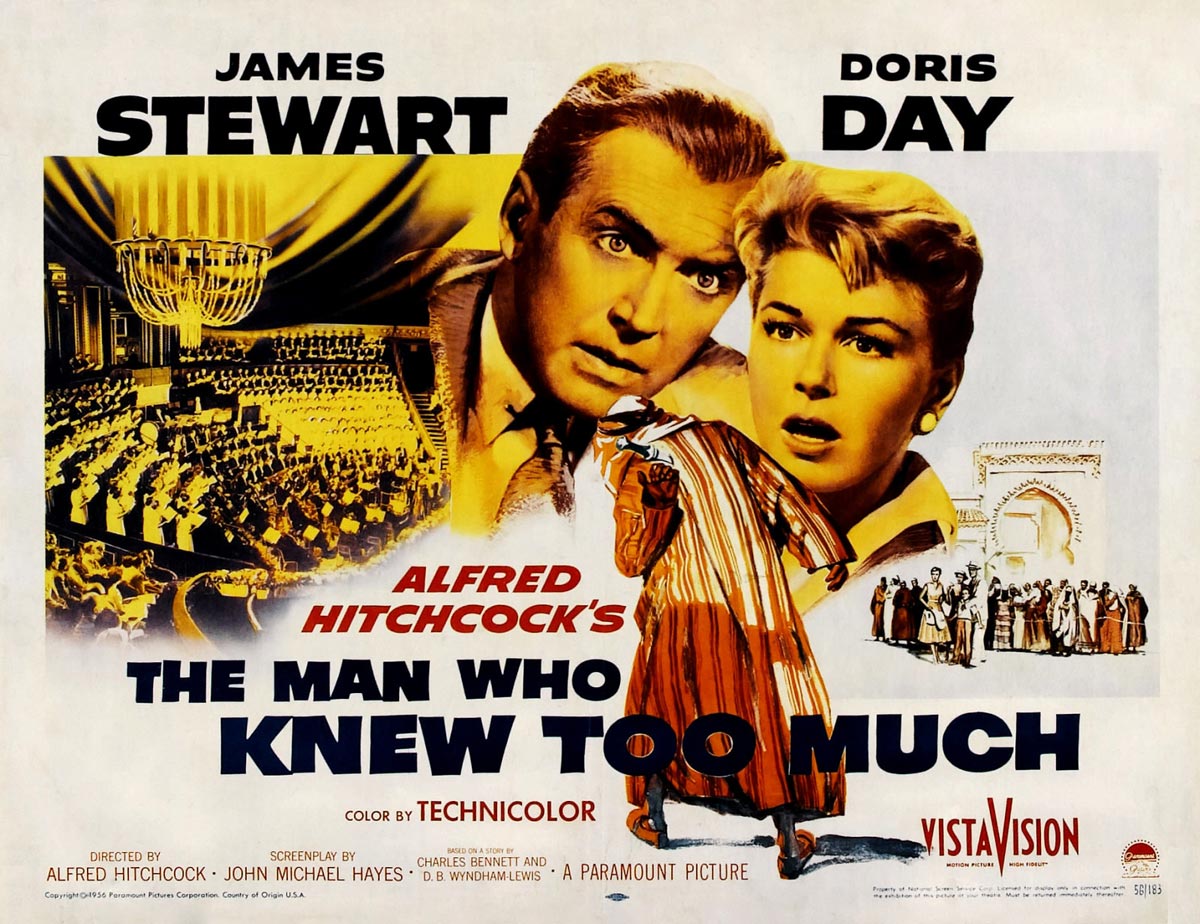
The Man Who Knew Too Much (1956) is a combination of Hitchcockian motifs. Most obviously, the “wrong place/time/guy” narrative from films like Saboteur (1942), The Wrong Man (1956), and North by Northwest (1959). The story of Dr. Ben McKenna (James Stewart), his wife Jo (Doris Day) and their son Hank (Christopher Olsen) are the quintessential Picket Fence Family. Of course Hitch is going to make sure that something happens to them. He loves to destroy images of perfection. Like David Lynch, there is no such thing as the All American Perfect Family in the Hitchcock world. Everyone’s got a secret or a problem. Or…they’re about to.
The original 1934 British-funded film begins in Switzerland while the 1956 US-version has the family holidaying in Marrakesh. Having a lovely time, oops! They witness a murder, the British couple they thought they could trust abducts their young son and they are off to London to stop an assassination attempt. As you do. For the remainder of the film it’s all political espionage, dramatic shot structures with a distinctive lack of dialogue, and a Bernard Herrmann score that brings the grand finale to Albert Hall (mirroring Hitch’s 1934 original, with discriminating changes per the Master of Suspense himself).
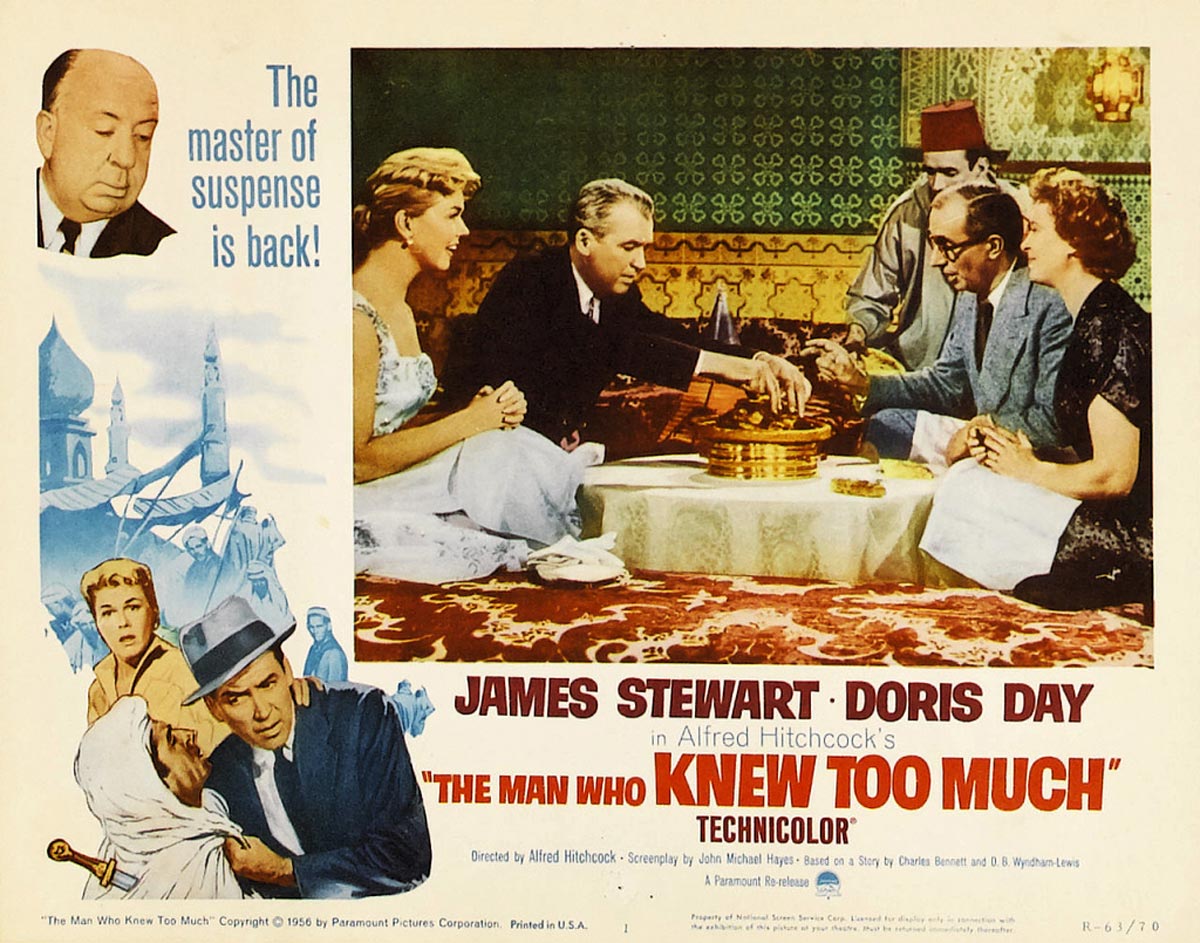
Hitchcock was more than a little disappointed when silent cinema went “vocal.” He told Truffaut, “the silent films were the purest form of cinema…in many of the films made today, there is very little cinema: they are mostly what I call ‘photographs with people talking.’ When we tell a story in cinema, we should resort to dialogue only when it’s impossible to do otherwise. I always try first to tell a story in the cinematic way, through a succession of shots and bits of film in between.”
If you were in the New Bev audience for the recent screenings of Strangers on a Train (1951) and Rear Window (1954), you would have seen the startling power of Hitch’s sequential visuals on the big screen. Used alone, these images would seem stark, photographic, unimportant. But connected with certain sounds and other bits of dialogue here and there, an array of meticulously planned imagery adds up to a highly tense situation. Which is the all-too-appropriate description for the finale of The Man Who Knew Too Much (1956).
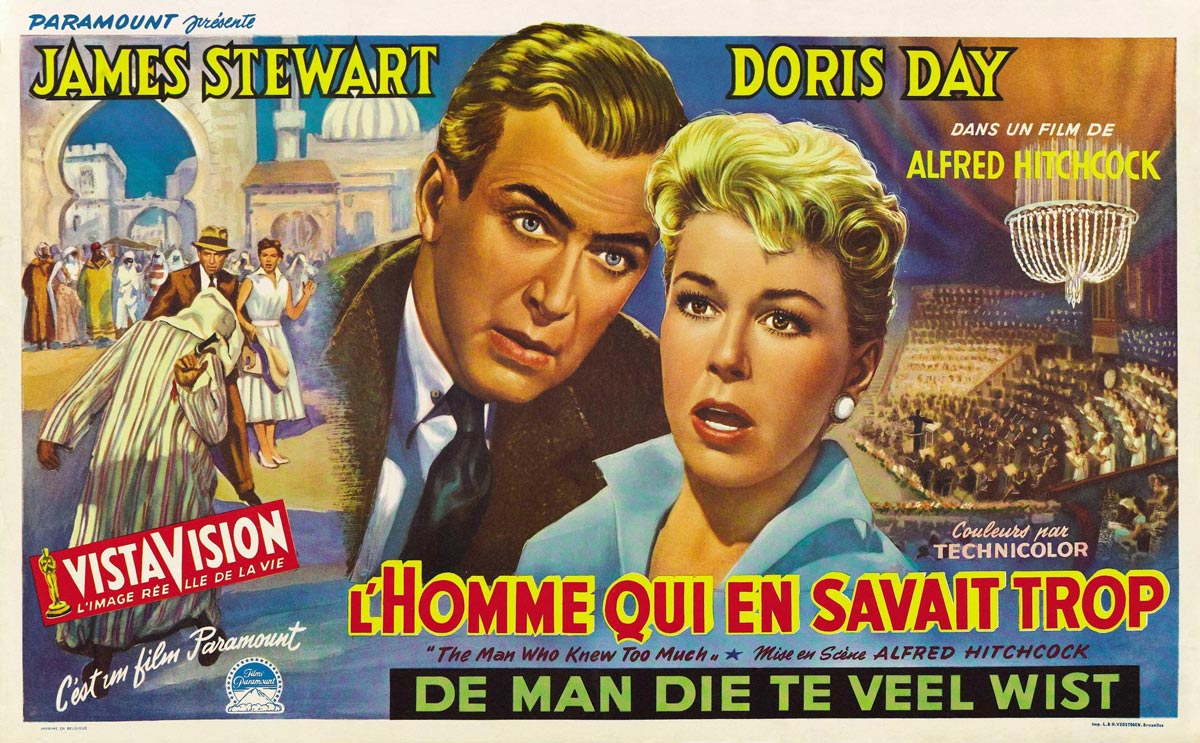
It is rarely discussed how influenced Hitchcock was by the Russian filmmakers and theorists who were writing and creating cinema. He mentioned the Kuleshov Effect and the immense value of proper editing repeatedly to Francois Truffaut in their conversations. It is, however, his well-executed montage work and career-long remarks and repeated emphasis about image being equal to emotion that shows what a disciple of Soviet cinema he was. Hitchcock’s cause/effect relationship in his films paralleled that of the Russian filmmakers who wrote extensively on the emotional power of montage and image. So Hitch’s frequent remarks on how the correct juxtaposition of images can create the desired emotion (suspense/fear/desire, in most cases) was almost directly lifted from the snowy climes of Eastern Europe!
Sergei Eisenstein was the first artist to really lay out the structure of montage and discuss putting successive disparate images together to increase the tension and heighten viewer emotion. Vsevolod Pudovkin was another badass montage guy. In fact, Eisenstein, Pudovkin and Grigori Alexandrov wrote one of the most critically important referendums on the use/introduction of sound to cinema. These guys understood the moving image. When the Albert Hall finale sequence arrives during The Man Who Knew Too Much, remember this clip from Pudovkin’s 1926 film, Mother. It has no dialogue (no intertitles) and only created from moving images combined with music. How does it make you feel? How does the end of The Man Who Knew Too Much make you feel? There’s a reason Hitch was the Master of Suspense. But he owed a small debt to some dudes behind the Iron Curtain.
So now we get to the more bizarre story behind TMWKTM. It won the 1956 Best Song Academy Award for the Jay Livingston-Ray Evans composition “Whatever Will Be, Will Be (Que Sera, Sera).” And there were writerly disagreements. But the more interesting part was that you just. Couldn’t. See. The. Film. For. Ages. Thanks, Hitchcock!
While making films at Paramount, Hitchcock made some very “Hitch” decisions. Certain directors like Otto Preminger, Charlie Chaplin, and Stanley Kubrick were incredibly protective of their film product (and thus the rights), and as filmmakers got more creative control they were allowed more rights to their films. But not at first. It came with time. Chaplin had his because of the history of United Artists, but that’s a whole other article. Lew Wasserman was Alfred Hitchcock’s agent and if you know anything about Lew then you know that he was one of the most powerful men that ever existed in Hollywood. What Lew made then still exists today- and I’m not just talking about Universal CityWalk, I’m talking about actors and profit sharing in films and more. When Hitch and his production company Transatlantic disintegrated, Wasserman started getting him some rockin’ contracts. The “we know Alfred Hitchcock is all that, but is he REALLY ALL THAT??” kind of contracts.
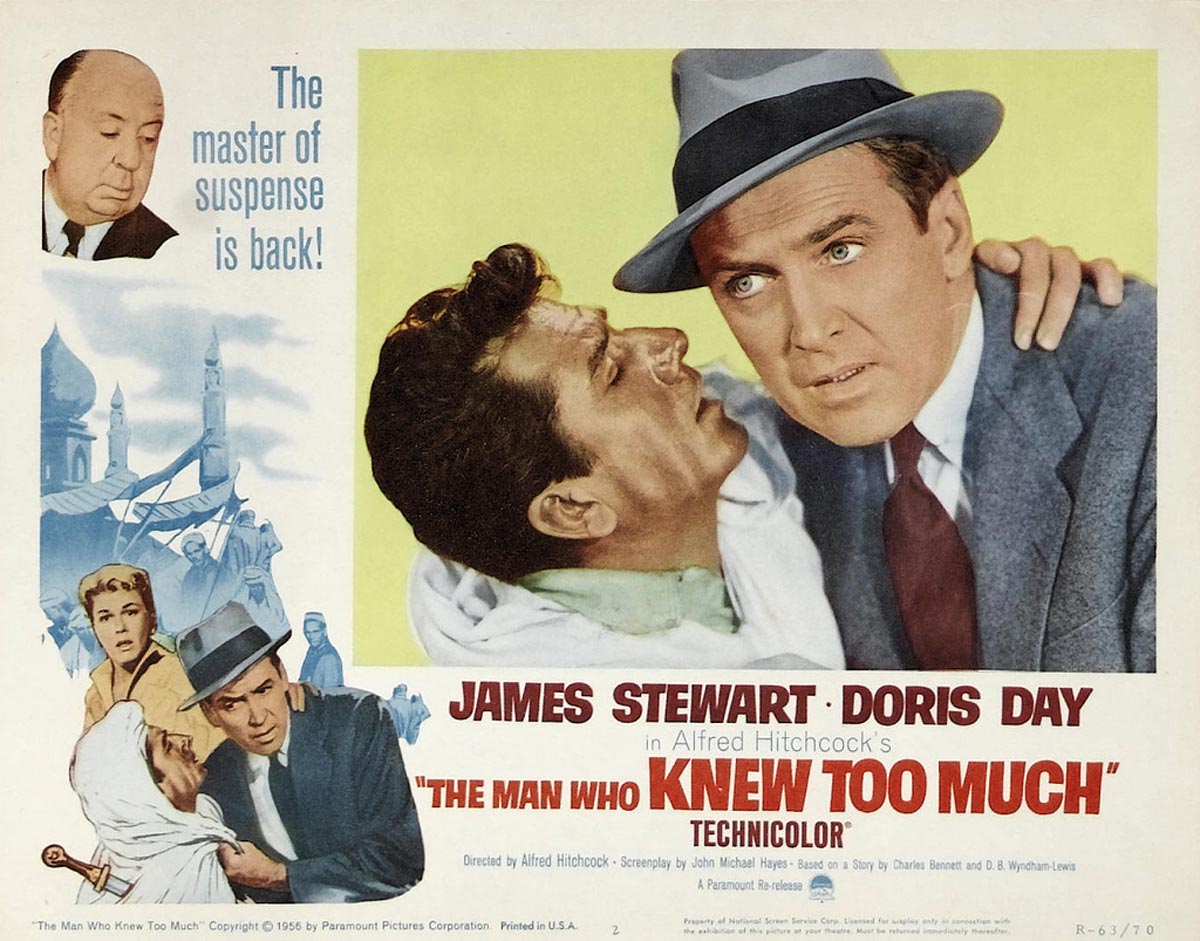
One of these contracts was at Paramount and pretty damn unique. The specifications allowed the director tremendous creative control, noting that the rights to five of his recent Paramount titles would revert back to him 8 years after their first cinema release. One of these films (Rope, 1948) was a Transatlantic flick and belonged to Hitch’s former partner Sydney Bernstein. He either simply released it without issue to Hitchcock or Wasserman convinced him to give it a go. The others – Rear Window (1954), The Trouble With Harry (1955), The Man Who Knew Too Much, and Vertigo (1958) – became so hard to see that they were beyond what most filmgoers today would call a rarity. They would’ve made up the Holy Grail of all-nighters. But all 35mm prints had been pulled from distribution and Hitchcock’s instructions were to destroy any prints found being played without his knowledge.
If that sounds harsh (it does and it is) requests for print destruction were not uncommon if there was a rights issue and the work was being played. Many a film print has been lost to the buzzsaw due to this inexcusable way of dealing with film assets and rights. Not that I have an opinion on that, in any way at all. Nope. There was even an incident at what is now the BFI Southbank (then known as the National Film Theater/NFT) where famed archivist/curator Henri Langlois offered a print for a retrospective from the Cinémathèque Française. When the NFT requested permission, Hitch said he would only acquiesce if he were told the print source. Knowing this would lead to the print’s destruction, the screening was cancelled.
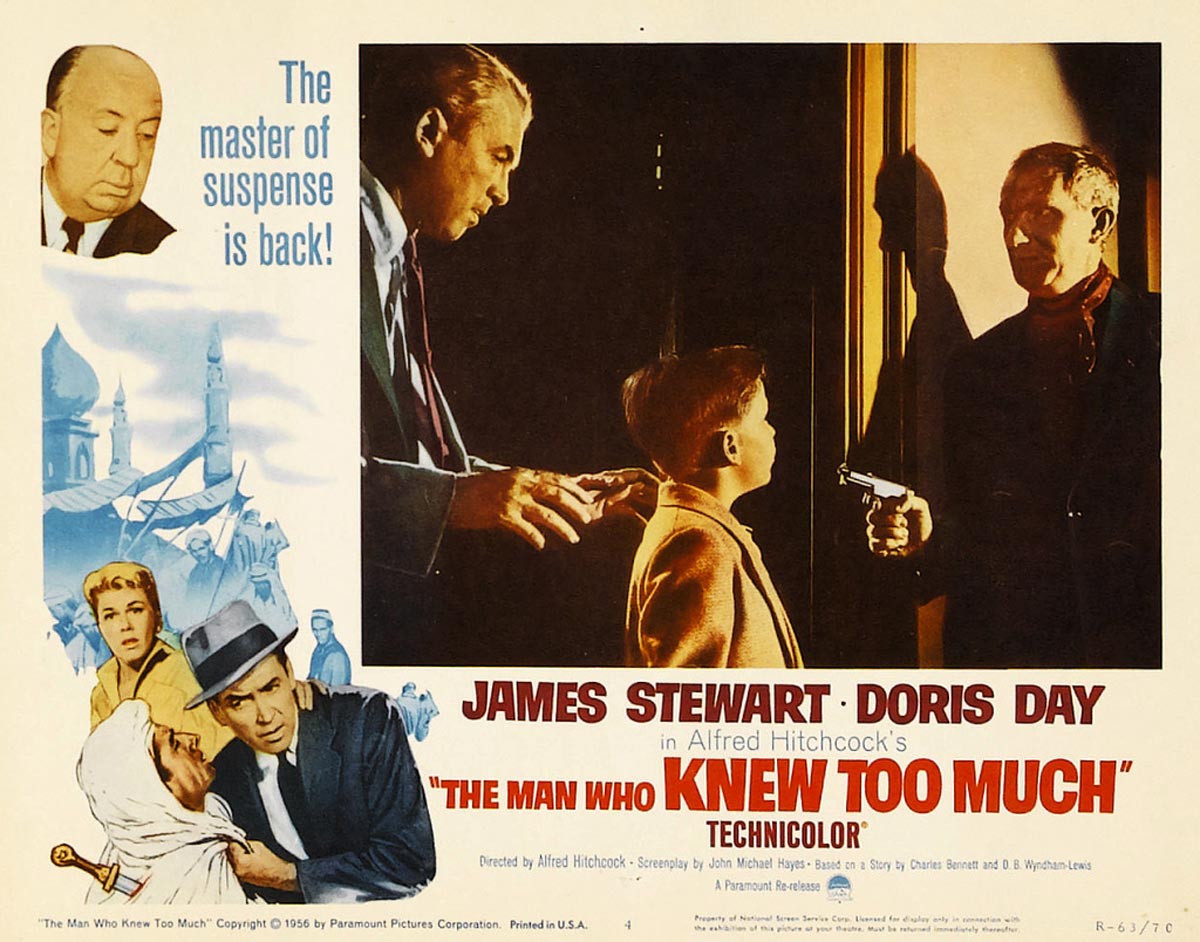
It is possible that Hitchcock was protective of his films due to his lousy relationship with David O. Selznick, as Selznick still owned rights to four of the films the men worked on together. But that certainly wasn’t enough to pull a full set of work away from the public eye for an indeterminate amount of time after release. It is far more likely that Hitchcock considered these films his legacy for his daughter Patricia and felt that by withdrawing them from general pop they would achieve the rarity status that they indeed did. As I noted in my Alfred Hitchcock primer, the director had grown up relatively lower class and was used to being frugal with what he viewed as valuable, so this kind of asset monetization was not unexpected.
This certainly made it difficult for fans and the burgeoning film criticism community. It was, after all, the beginnings of the Cahier du Cinema in France, the birth of the auteur theory, and about the time people began to see film as a bit more than just entertainment. One might find some 16mm prints of the Missing Hitchcocks floating around, but it was still pretty unlikely and a black market for prints began to have some real movement in the film collector “underground.” If you were a cinephile with an eagle eye, you might catch a flyer advertising a “rare 1950s Hitchcock starring Kim Novak” (Vertigo, 1958) or “a Hitchcock thriller to make you look behind your back” (Rear Window, 1954) and have a shot at seeing one of these verboten works. But other than that, Hitch had them locked up tight.
When Hitchcock passed away, he had begun to work out the legalities with his Wasserman-appointed agent, Herman Citron, to release the five films again. Sadly, it went on for a few years longer than the great director himself, and he never saw the great monetary and cultural success the films made upon re-release. Patricia Hitchcock witnessed the much-celebrated impression these films had on brand-new generations as well as the bonus of having them make even more money the second time around.
Hopefully you will appreciate the fact that we now have full access to appreciate, enjoy and revel in these films together now on the big screen for these wonderful afternoon classics at the New Beverly. See you September 27th for Hitch’s gothic thriller, the Academy Award-winner, Rebecca (1940)!

